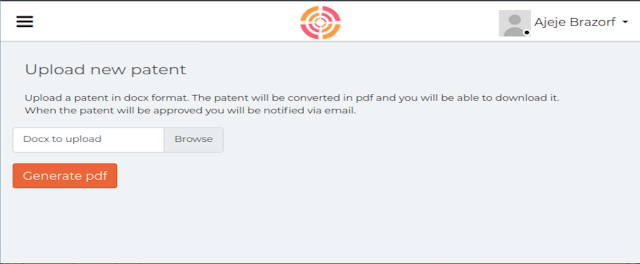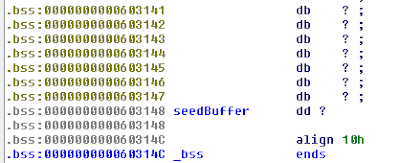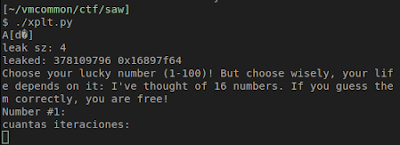How do I get started with bug bounty hunting? How do I improve my skills?
These are some simple steps that every bug bounty hunter can use to get started and improve their skills:
Learn to make it; then break it!
A major chunk of the hacker's mindset consists of wanting to learn more. In order to really exploit issues and discover further potential vulnerabilities, hackers are encouraged to learn to build what they are targeting. By doing this, there is a greater likelihood that hacker will understand the component being targeted and where most issues appear. For example, when people ask me how to take over a sub-domain, I make sure they understand the Domain Name System (DNS) first and let them set up their own website to play around attempting to "claim" that domain.
Read books. Lots of books.
One way to get better is by reading fellow hunters' and hackers' write-ups. Follow /r/netsec and Twitter for fantastic write-ups ranging from a variety of security-related topics that will not only motivate you but help you improve. For a list of good books to read, please refer to "What books should I read?".
Join discussions and ask questions.
As you may be aware, the information security community is full of interesting discussions ranging from breaches to surveillance, and further. The bug bounty community consists of hunters, security analysts, and platform staff helping one and another get better at what they do. There are two very popular bug bounty forums: Bug Bounty Forum and Bug Bounty World.
Participate in open source projects; learn to code.
Go to https://github.com/explore or https://gitlab.com/explore/projects and pick a project to contribute to. By doing so you will improve your general coding and communication skills. On top of that, read https://learnpythonthehardway.org/ and https://linuxjourney.com/.
Help others. If you can teach it, you have mastered it.
Once you discover something new and believe others would benefit from learning about your discovery, publish a write-up about it. Not only will you help others, you will learn to really master the topic because you can actually explain it properly.
Smile when you get feedback and use it to your advantage.
The bug bounty community is full of people wanting to help others so do not be surprised if someone gives you some constructive feedback about your work. Learn from your mistakes and in doing so use it to your advantage. I have a little physical notebook where I keep track of the little things that I learnt during the day and the feedback that people gave me.
Learn to approach a target.
The first step when approaching a target is always going to be reconnaissance — preliminary gathering of information about the target. If the target is a web application, start by browsing around like a normal user and get to know the website's purpose. Then you can start enumerating endpoints such as sub-domains, ports and web paths.
A woodsman was once asked, "What would you do if you had just five minutes to chop down a tree?" He answered, "I would spend the first two and a half minutes sharpening my axe."
As you progress, you will start to notice patterns and find yourself refining your hunting methodology. You will probably also start automating a lot of the repetitive tasks.
Continue readingThese are some simple steps that every bug bounty hunter can use to get started and improve their skills:
Learn to make it; then break it!
A major chunk of the hacker's mindset consists of wanting to learn more. In order to really exploit issues and discover further potential vulnerabilities, hackers are encouraged to learn to build what they are targeting. By doing this, there is a greater likelihood that hacker will understand the component being targeted and where most issues appear. For example, when people ask me how to take over a sub-domain, I make sure they understand the Domain Name System (DNS) first and let them set up their own website to play around attempting to "claim" that domain.
Read books. Lots of books.
One way to get better is by reading fellow hunters' and hackers' write-ups. Follow /r/netsec and Twitter for fantastic write-ups ranging from a variety of security-related topics that will not only motivate you but help you improve. For a list of good books to read, please refer to "What books should I read?".
Join discussions and ask questions.
As you may be aware, the information security community is full of interesting discussions ranging from breaches to surveillance, and further. The bug bounty community consists of hunters, security analysts, and platform staff helping one and another get better at what they do. There are two very popular bug bounty forums: Bug Bounty Forum and Bug Bounty World.
Participate in open source projects; learn to code.
Go to https://github.com/explore or https://gitlab.com/explore/projects and pick a project to contribute to. By doing so you will improve your general coding and communication skills. On top of that, read https://learnpythonthehardway.org/ and https://linuxjourney.com/.
Help others. If you can teach it, you have mastered it.
Once you discover something new and believe others would benefit from learning about your discovery, publish a write-up about it. Not only will you help others, you will learn to really master the topic because you can actually explain it properly.
Smile when you get feedback and use it to your advantage.
The bug bounty community is full of people wanting to help others so do not be surprised if someone gives you some constructive feedback about your work. Learn from your mistakes and in doing so use it to your advantage. I have a little physical notebook where I keep track of the little things that I learnt during the day and the feedback that people gave me.
Learn to approach a target.
The first step when approaching a target is always going to be reconnaissance — preliminary gathering of information about the target. If the target is a web application, start by browsing around like a normal user and get to know the website's purpose. Then you can start enumerating endpoints such as sub-domains, ports and web paths.
A woodsman was once asked, "What would you do if you had just five minutes to chop down a tree?" He answered, "I would spend the first two and a half minutes sharpening my axe."
As you progress, you will start to notice patterns and find yourself refining your hunting methodology. You will probably also start automating a lot of the repetitive tasks.
- What Is Hacking Tools
- Pentest Tools Port Scanner
- Bluetooth Hacking Tools Kali
- How To Make Hacking Tools
- Hacker Tools 2019
- Hack Rom Tools
- Hacking Tools Kit
- Hacker Tools
- Hacker Search Tools
- Pentest Tools Url Fuzzer
- Hack App
- Hack Tools Download
- Pentest Tools For Mac
- Pentest Tools Windows
- Underground Hacker Sites
- Wifi Hacker Tools For Windows
- Hacker Techniques Tools And Incident Handling
- Growth Hacker Tools
- Hacker Techniques Tools And Incident Handling
- Termux Hacking Tools 2019
- Pentest Tools For Android
- Pentest Tools Linux
- Pentest Tools Bluekeep
- Tools For Hacker
- Pentest Tools Kali Linux
- New Hacker Tools
- Hacker Hardware Tools
- Hacking Tools For Windows Free Download
- Hacking Tools
- Hack And Tools
- Pentest Tools Website
- Hacking App
- Hacking Tools Windows 10
- Hack Tools Download
- Github Hacking Tools
- Hack Tools For Mac
- Hackers Toolbox
- Hacker Tools Linux
- Hacking Tools Mac
- Nsa Hack Tools
- Pentest Tools Tcp Port Scanner
- Nsa Hack Tools Download
- Hacking Tools Mac
- Hacking Tools Software
- New Hack Tools
- Pentest Tools For Ubuntu
- Pentest Tools Review
- Hacking Tools For Beginners
- Hacking Tools And Software
- Pentest Tools Android
- Hack Tools For Windows
- Hackers Toolbox
- Pentest Reporting Tools
- Hacking Tools Software
- Hacking Tools Windows 10
- Pentest Tools Kali Linux
- Pentest Tools Download
- Black Hat Hacker Tools
- Best Hacking Tools 2020
- Hacker Tools Free Download
- Hacking Tools And Software
- Pentest Tools For Android
- World No 1 Hacker Software
- How To Hack
- Tools 4 Hack
- Blackhat Hacker Tools
- Hacking Tools Online
- Nsa Hacker Tools
- Hacking Tools For Windows 7
- Hacker Tools For Mac
- Hack And Tools
- Pentest Tools
- New Hacker Tools
- What Are Hacking Tools
- Hacking Tools Software
- Hacker Tools Software
- Hack Tools For Games
- Hacking Tools Windows 10
- Pentest Tools Bluekeep
- Pentest Tools Github
- Hacking Tools For Mac
- Pentest Tools Windows
- Android Hack Tools Github
- Hack Tools Online
- Pentest Tools Website
- World No 1 Hacker Software
- How To Make Hacking Tools
- Hacking Tools Windows 10
- Free Pentest Tools For Windows
- Hacker Tools Apk
- Hacker Tools Apk
- Hacking Tools Hardware
- Hacker Hardware Tools
- Hacking Tools Hardware
- Hack App
- Wifi Hacker Tools For Windows
- Hackers Toolbox
- Pentest Tools Kali Linux
- Pentest Tools For Windows
- Pentest Tools Website
- Hack Tools Pc
- Pentest Automation Tools
- Hack Rom Tools
- Black Hat Hacker Tools
- Hacking Tools Software
- Hacking Tools
- Hacker Tools Free
- Kik Hack Tools
- Hack Tool Apk
- Pentest Tools For Android
- Black Hat Hacker Tools
- Hack Tools Github
- How To Make Hacking Tools
- Hacking Tools Github
- Hacking Tools Mac
- Termux Hacking Tools 2019
- Hack And Tools
- Pentest Tools Tcp Port Scanner
- Hack Tools
- Free Pentest Tools For Windows
- Pentest Tools Online
- Hack Website Online Tool
- Pentest Tools Free
- Best Pentesting Tools 2018
- Pentest Tools Windows
- How To Hack
- Hacker Tools Apk
- Pentest Tools Port Scanner
- Pentest Tools Download
- Hacker Tools Free
- Hack Tools Mac
- Hacking Tools Download
- Ethical Hacker Tools
- Pentest Tools Github
- Hacking Tools Download
- Hacker Tools For Pc
- Best Pentesting Tools 2018
- Hack Tool Apk No Root
- Hacking Tools For Games
- Hacker Tools For Windows



















